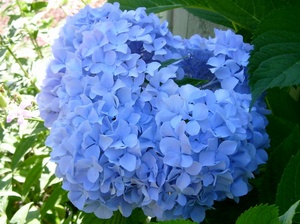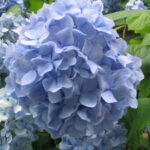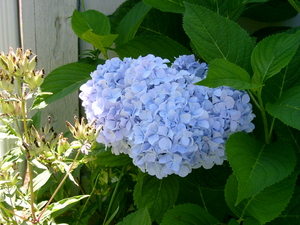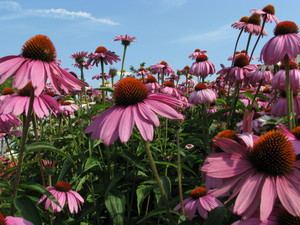Blue flowers are uncommon, and very few varieties can be found with true azure blooms. Some growers claim their flowers are blue when in fact they are a shade of purple that could pass for blue. On the other hand, blue hydrangeas are true azure flowers that will produce blue blooms for years – if they receive the nutrients necessary to develop and keep their beautiful cerulean blooms. Placement is also crucial when attempting to keep hydrangeas blue and keep them producing their beautiful color year after year.
The first time I noticed blue hydrangeas I did not know what they were. I was traveling in South Carolina, and I was taken in by these large blue blooms that were the prettiest color of any blooming flower I had ever seen. Many homes had these beautiful flowers, and I was taken in by their color and enormous size. Their broad leaves were a beautiful shade of grass green, but it was the shade of blue that was really impressive and eye-catching.
Once I found out they were blue hydrangeas I wondered if it were possible to grow these beautiful flowers in the northern part of Indiana. I was recently reminded of these gorgeous azure colored hydrangeas after discovering a single bush growing alongside my new home. I felt as if this was a sign of better days to come. I had been given a gift of blue hydrangeas, and I had to find out how to care for them to keep them as gorgeous as ever.
Soil and Water pH
The pH of the soil and water are important when trying to keep hydrangeas from turning color, and some areas naturally have just the right soil and water requirements to keep the colors rich and vibrant. A low soil pH between 5.2 and 5.5 is recommended to keep hydrangeas blue, and it can be lowered naturally using organic matter such as coffee grounds or the peelings from produce. Alternately, store-bought products can be used to lower the pH of the soil. Search for low phosphorus fertilizer with a high potassium content for blue hydrangeas, and do not use bone meal or super-phosphates of any kind.
Water pH can also affect the color of hydrangeas, and aluminum is a necessary ingredient in soil to keep the beautiful cerulean color. Buy a test kit, and check the water used for watering outdoor plants. It should also have a pH between 5.2 and 5.5. Add aluminum sulfate to the water to lower the pH at a rate of approximately one tablespoon per gallon of water. Begin by watering the plant with clear water before using the mixture, and do not overdo the aluminum sulfate. It can damage the roots if the mixture is too strong or applied without applying clear water first. Follow product label instructions for best results, especially if the plant is young.
The Best Locations for Planting Hydrangeas
Lime is the enemy of blue hydrangeas. It will turn hydrangeas pink, and the planting location is as important as the condition of the water and soil. Select an area away from natural sources of lime including cement foundations and sidewalks when planting hydrangeas. In addition, choose an area with filtered sun to partial shade. Hydrangeas prefer sandy soil or clay loam, and when placed in a suitable location with conditioned soil, they will provide beautiful blue flowers for years to come.








